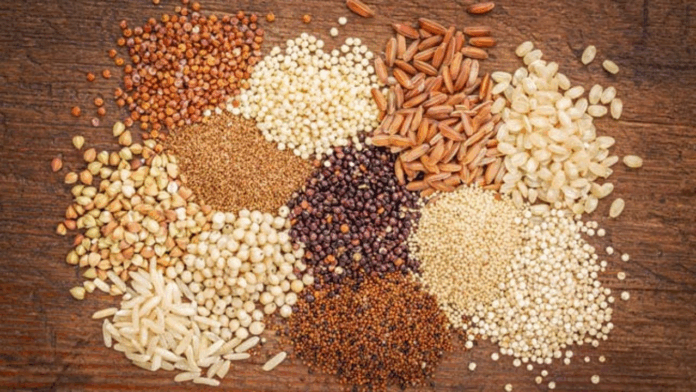The Chamber of Agribusiness Ghana (CAG) has declared what it calls a “national agricultural emergency,” warning that Ghana’s grain sector faces imminent collapse unless the government takes urgent corrective action, including a temporary ban on rice imports and the repeal of soya bean export restrictions.
According to the Chamber, over 1.2 million metric tonnes of rice, maize, and soya beans are currently stranded in warehouses and farms across the country, despite Ghana still importing large quantities of these commodities to meet consumption needs.
“We are witnessing a paradox of plenty — surplus grain in warehouses and shortages in the market,” said Farmer Anthony Kofituo Morrison, Chief Executive Officer of the Chamber of Agribusiness Ghana. “Without swift government action, farmers will be forced out of business and the grains sector could collapse.”
Crisis of Surplus Amid Shortage
CAG data shows that while Ghana consumes an estimated 1.9 million metric tonnes of rice annually, local producers account for just under 900,000 metric tonnes.
Yet, nearly two years’ worth of both milled and paddy rice reportedly remain unsold, trapped in warehouses and factories nationwide.
The Chamber attributes this anomaly to policy inconsistencies and market distortions, including the unchecked influx of smuggled and expired rice through unapproved routes, which it says have cost the state millions in tax revenue and destabilized local markets.
The situation is equally dire for maize and soya producers.
Ghana’s maize consumption stands at 3.3 million metric tonnes, but only 2.5 million metric tonnes are produced locally.
For soya, national output of around 225,000–250,000 metric tonnes represents barely a third of the country’s potential, while demand continues to rise above 300,000 metric tonnes.
Policy under fire: L.I. 2432 blamed for market distortion
The Chamber blames part of the crisis on the Export and Import (restriction on exportation of soya beans) Regulations, 2020 (L.I. 2432), which bans the export of soya beans without special authorization.
While the policy was designed to protect local feed industries, CAG says it has instead devastated farm incomes.
Farm-gate prices for soya have fallen from GH¢650 to GH¢400 per bag, with thousands of bags reportedly locked in warehouses across the northern and southern belts.
Many farmers are abandoning the crop altogether, seeing little incentive to continue cultivation under current restrictions.
CAG’s three immediate demands
To rescue the sector, the Chamber is calling on government to adopt three emergency measures:
- A 3-month moratorium on rice imports — to clear existing local stockpiles, support millers, and stabilize prices.
- Immediate repeal of L.I. 2432 — to free the soya bean market, restore prices, and unlock production potential.
- Comprehensive market audit — led by the Ministries of Trade and Agriculture, Ghana Revenue Authority, Ghana Standards Authority, and Food and Drugs Authority, to trace smuggled and expired rice, validate tax compliance, and restore confidence in the market.
Call for strategic state intervention
Beyond short-term fixes, CAG is urging the government to introduce a strategic grain reserve procurement program, using the National Food Buffer Stock Company (NAFCO) to buy surplus grains directly from farmers at fair prices.
CAG is also proposing a five-year national rice production strategy, aligned with import quotas and increased investment in irrigation, mechanization, and processing infrastructure.
“A moment for decisive action”
The Chamber warns that inaction could trigger widespread rural poverty, food inflation, and collapse of the local grain economy.
“We must protect the livelihoods of our farmers and the integrity of Ghana’s food system,” Morrison stressed. “Decisive action today will turn this crisis into an opportunity for agricultural transformation.”
CAG believes that with coordinated government support and a renewed commitment to local value addition, Ghana’s grains sector can transition from vulnerability to a driver of food security, industrial growth, and national resilience.


